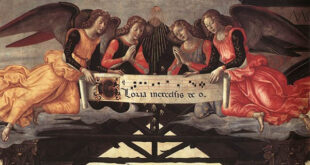Throughout the centuries, the Cross has been the central symbol of Christianity, reminding us of the redemptive sacrifice of Jesus Christ. But what happens when we talk about the Lignum Crucis, that is, the fragments of the actual Cross on which the Savior died? Where are they today? What is their significance for Christians in the 21st century?
In this article, we will explore the origin, history, and profound spiritual meaning of the Lignum Crucis, a treasure that connects us with the greatest mystery of our faith: the Passion, Death, and Resurrection of Christ.
The Origin of the Lignum Crucis: The Cross of Christ
Christian tradition tells us that Jesus Christ was crucified on a wooden cross on Mount Calvary, outside the walls of Jerusalem, in the year 33 A.D. The cross, which in Roman times was an instrument of torture reserved for criminals, became the throne from which the Son of God offered His life for the salvation of humanity.
But what happened to this Cross after the Crucifixion? According to historical accounts, the Cross of Christ was buried or hidden by the Jews or Romans, either to prevent Christians from venerating it or simply as discarded material. For nearly three centuries, its whereabouts remained unknown.
The Miraculous Discovery by Saint Helena
The story takes a surprising turn in the 4th century. Saint Helena, the mother of Emperor Constantine the Great, undertook a journey to the Holy Land in 326 A.D. with the purpose of finding the true Cross of Christ. Motivated by her conversion to Christianity and her son’s vision before the Battle of the Milvian Bridge, Saint Helena arrived in Jerusalem and began her search with the help of local Christians.
According to tradition, after conducting excavations near Mount Calvary, they found three buried crosses. To identify which one belonged to Christ, they brought a sick woman and touched her with each. When the woman was miraculously healed upon contact with the third cross, it became clear that this was the Lignum Crucis.
From that moment on, the Cross was venerated and fragmented into various relics that were distributed throughout the Christian world.
Where Are the Fragments of the Lignum Crucis Today?
Over the centuries, fragments of the Lignum Crucis were distributed among churches, monasteries, and royal collections. Today, some of the most important ones are found in:
- The Basilica of the Holy Cross in Jerusalem (Rome): One of the most important Christian sites, housing fragments of the Cross along with other relics of the Passion.
- Notre-Dame Cathedral (Paris): Home to one of the largest relics, which was rescued during the 2019 fire.
- The Monastery of Santo Toribio de Liébana (Spain): Holds the largest preserved fragment of the Lignum Crucis in the world.
- The Imperial Treasury of Vienna (Austria): Contains several relics associated with Christ’s Passion.
How Can We Know If a Fragment Is Authentic?
Since there are many relics of the Lignum Crucis, some have questioned their authenticity. However, the Church has applied rigorous criteria for verification, requiring historical documentation to support their origin.
An interesting fact is that in the 16th century, Calvinist theologian John Calvin claimed that if all the fragments of the Cross distributed worldwide were gathered, an entire forest could be reconstructed. However, modern studies have shown that the amount of wood in certified relics is relatively small, disproving that idea.
The Meaning of the Lignum Crucis in Catholic Faith
Beyond its historical value, the Lignum Crucis has a profound spiritual significance for Christians. It is not just a piece of wood but a tangible testimony of Christ’s love for humanity. Every time we venerate a relic of the Cross, we remember that our faith is not just a philosophy or a set of ideas but is rooted in a real event: the Passion, Death, and Resurrection of Jesus.
The Cross teaches us that suffering is not the end but the path to Resurrection. In a world marked by pain, uncertainty, and despair, the Lignum Crucis reminds us that Christ conquered death and opened the doors to Eternal Life for us.
How Can We Live the Spirit of the Lignum Crucis Today?
The message of the Cross remains relevant. As Christians, we can carry the Lignum Crucis in our hearts by living out its teachings:
- Accepting our crosses with faith: Jesus taught that whoever wants to follow Him must take up their cross daily (Mt 16:24). In difficult moments, let us remember that our cross, united with Christ’s, has redemptive value.
- Practicing mercy and forgiveness: From the Cross, Jesus forgave His executioners. We are also called to forgive and love our enemies.
- Living with hope: The Cross is not the end but the path to glory. No matter how great our trial, Christ has triumphed.
Conclusion: A Wood That Calls Us to Holiness
The Lignum Crucis is not just a historical relic but a living reminder of Christ’s sacrifice and His infinite love for us. Through it, the Cross ceases to be merely a symbol and becomes a reality that transforms our lives.
Today, more than ever, in a world searching for answers and meaning, the Cross remains the key to true hope. Contemplating the Lignum Crucis is contemplating the greatest love story ever told: the story of a God who loved us to the extreme and invites us to follow Him to Eternal Life.
Are you willing to carry your cross with love? Christ is waiting for you in it.






